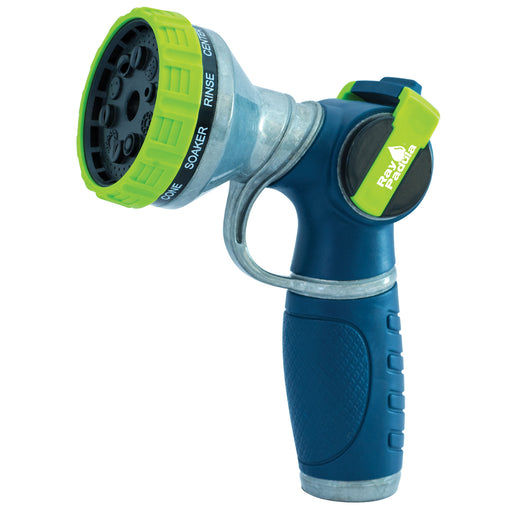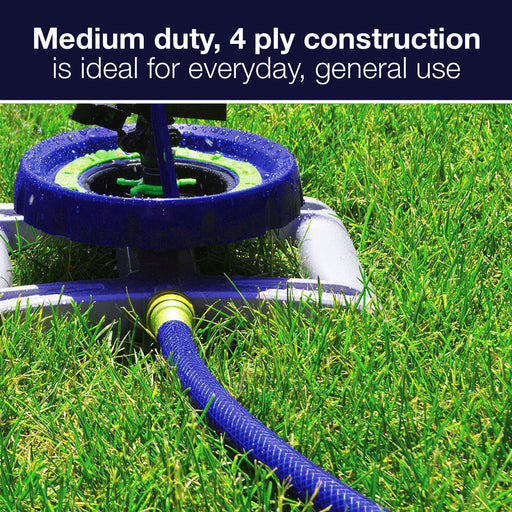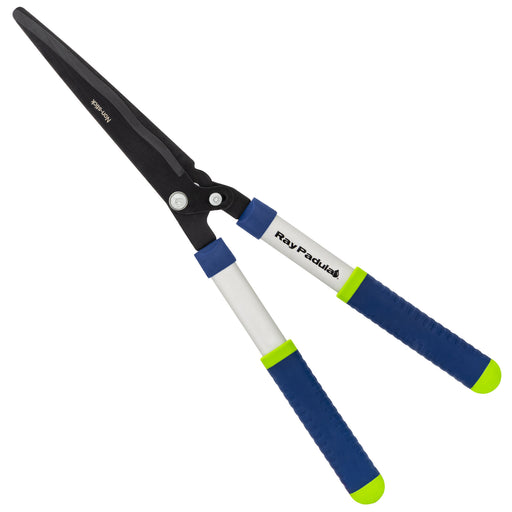
When to Mow
Just like there are optimum conditions that your grass will grow and look its best there are also optimum conditions that you should follow when mowing. First off, the last thing you'll want to do is stick to a pre-determined, rigid schedule. While it may be much easier to make a date with your lawnmower every Saturday at 3 PM, you'll need to remain flexible, since the conditions that determine when you mow will vary throughout the season.
Most importantly, you'll have to pay close attention to you lawn and its grass height, (keeping in mind the one-third rule), your lawn's overall general health, as well as how much sun and rain you have, or have not had. It really comes down to how much your lawn has grown above it's optimal height that matters, not the amount of time it's been since you've last mowed. For example, if your lawn is best at a height of 2 inches, following the one-third rule, you should mow it once it's reached 3 inches in height. If your lawn is best kept at 3 inches, cut it when it reaches 4.50 inches. Do the math on your grass type, and mow accordingly, remembering to never cut more than one-third of the height with each mow.
If your lawn starts to get away from you after a long vacation, or a long bought of rain - don't go too overboard trying to get it back in line. Always stick to the one-third rule, no matter how tall it's gotten. If you need to mow again to reach optimal height, wait a few days between mowing, and then do so.
Stay Sharp!
It's important to make sure the blades on your lawn mower are sharp! If you notice a brownish cast to your lawn after you mow, uneven cuts, or a pulling action instead of a clean cut, it's likely the blades on your mower need sharpening. If you are using a traditional rotary mower (blades underneath a deck), it's pretty simple to sharpen them yourself. If you are not comfortable with doing so, your local hardware store, or garden center should be able to do so for you.
To sharpen your mower's blades, you'll need a wrench, vise, file, and cone level.
Step 1 - Safety First! Before touching or removing the blades, make sure your mower is turned off, and disconnect the spark plug. If you are using a cordless, battery operated mower, ensure all batteries are completely removed.
Step 2 - Remove the Blade. Using a wrench, and following all directions in the instruction manual of your mower, remove the blades. Place the blade in a vise and begin to sharpen the edges with a file. When sharpening, use smooth, even passes at the blade to maintain a proper angle.
Step 3 - Level Up. Place the blade on a cone level to make sure it's balanced. If the blade isn't balanced, file a bit more at the heavy end until it's evened up. Unbalanced blades will lead to uneven cuts, vibration, and potential damage to your mower.
Step 4 - Re-attach the Blades. Place the blades back onto the mower, with the correct side up, and tighten the nut securely.

How to Mow
When you're finished mowing your lawn, the result should be an attractive, even, clean cut carpet of grass. It's not hard to accomplish by following these easy steps.
-
For your safety be sure to remove any debris from your lawn prior to mowing. This includes sticks, branches and any stones or rocks.
-
Have your blade set at the correct height. Check and re-adjust the cutting height if necessary.
-
Begin by mowing one pass along the perimeter of your lawn and around any trees, gardens or objects.
-
Then, cut in straight rows in-between this perimeter cut.
-
Overlap each row (pass) by 2-3 inches to ensure complete cutting coverage. The tires of your mower should be in the cut section of grass of the previous row.
-
Make very gentle, slow turns.
-
Change your mowing direction each time you mow. Mow at a 45 or 90 degree angle to the previous cut. Doing this will keep tire tuts from developing, and also helps grass to grow upright instead of sideways from a constant mow pattern.
-
Never mow the lawn if the grass is damp or wet. Clumps of wet grass will stick to your mower blades, as well as the undercarriage of your mower deck. This can also lead to clumps of grass gumming up the inner workings of the mower. This will also likely lead to uneven cuts.
-
Always, always, always push your lawnmower, never pull it towards you. The chance that you may slip with a running lawnmower heading in your direction isn't worth the risk. It's best to finish mowing with the same amount of fingers and toes that you started with!
-
Don't mow in the heat of the day. Mowing causes a slight suffering to the grass blades, and the extreme heat will only cause additional suffering.
-
Mow any slopes or hills on a diagonal. Mowing horizontally or vertically on a slope increases your chances of taking an accidental tumble while operating a sharp bladed machine.
-
Maintain your equipment for lasting performance. This means wiping off any debris from the deck, rinsing the undercarriage, and ensuring your blades remain sharp throughout the season.
Cut it Close?
Accidentally mowing your lawn too low, or giving a section of turf a buzz cut is something that happens to even the best of us! When this happens, your lawn will be sent into a temporary tailspin. Thankfully, with a little extra TLC, your grass should be able to make a full recovery. If you've stuck with a regular, proper watering schedule, and fertilizing plan, most likely your lawn will quickly recover just as it is. If you haven't, a small dose of calcium, manganese, and iron with deep and thorough watering for the next few weeks will be just what the doctor ordered!
Mowing Etiquette
Mowing the lawn right after dinner may be the best time for you to mow your lawn, but that doesn't mean everyone around you likes the sound of a lawnmower running when they're trying to relax after a long day, or the whine of blowers when they're trying to sleep in on a lazy Sunday morning. When taking care of your yard, there are a few simple do's and don'ts we should all try and follow:
-
Some neighborhoods and communities have noise regulations; know them, and follow them.
-
Never blow your clippings into the street, or onto your neighbor's property.
-
Make sure your mower is running correctly to minimize noise, as well as air pollution.
-
You know your neighbors best. If your neighbor works the nightshift on Friday nights, it's probably best not to start up the mower first thing Saturday morning. If a Sunday morning mowing is truly the only time you're able to mow, offering to mow their lawn every once and a while may be all that's needed!
Legal Disclosure:
This post is provided for informational, educational purposes only. This information is intended to provide general guidelines. Because tools, products, materials, techniques, and local codes are constantly changing, Ray Padula Holdings assumes no responsibility for the accuracy of the information contained herein and disclaims any liability for the omissions, errors, or outcomes of any projects or tasks completed. It is the responsibility of the reader to ensure compliance with all local laws, rules, codes, and regulations for any projects completed. If there are any questions or doubts regarding any elements of any information provided, consult a local, licensed professional.



































